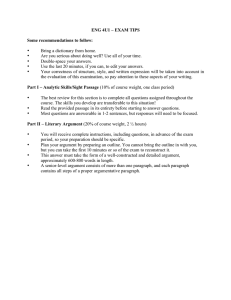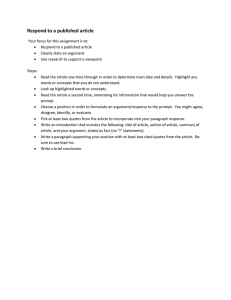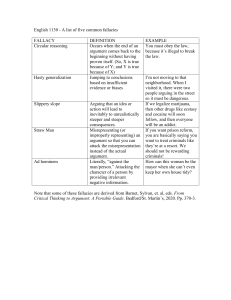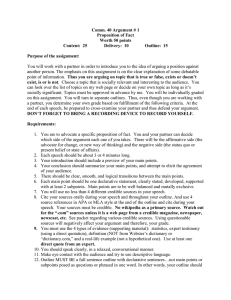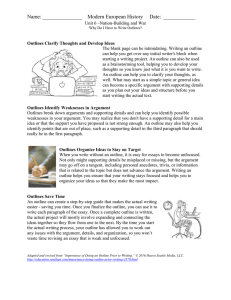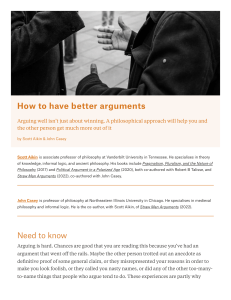ENC 1102 Reading and Writing Process
advertisement
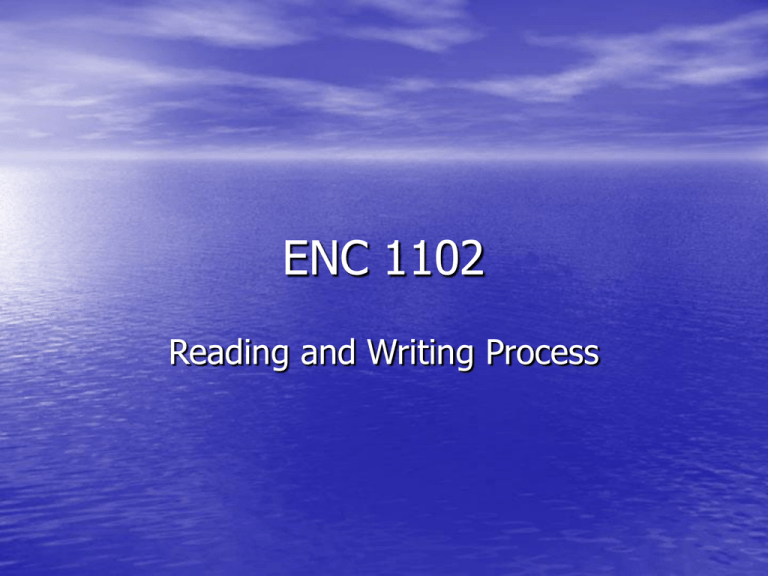
ENC 1102 Reading and Writing Process Three Categories of Writing • Exposition – Informative • Argument – Persuasive • Expressive – Emotional and Pensive The Communications Triangle Reading as Re-creation • Meaning – The author’s intended meaning • Significance – The particular relevance for each reader. Inferences • Indeterminacies – Passages open to various interpretations. • Gaps – Things left unsaid in the story. • Consistency building – The process of compiling details to make sense of them. Close Readings • Read with a pen or pencil in hand. • Make notes in the margins as you read. • Underline words you do not know. Identifying your Audience and Purpose • Audience – For whom is the author writing? – Is the audience familiar with the work? • Purpose – Why has the author written a piece of literature? – Is it meant to entertain, inform, or persuade? Brainstorming • Focused Free Writing • Listing • Asking Questions • Keeping a Journal • Arguing with Yourself: Critical Thinking • Arguing a Thesis Drafting Your Argument • Take notes • Organize them into an outline • Revising an Argument – – – – – Unity Organization Clarity Polish Editing • Outline an Argument • Peer Editing Overview of the Final Draft • • • • • • • • Title Introductory paragraph Organization Brief quotations Analysis Present tense Concluding paragraph No typographical errors


